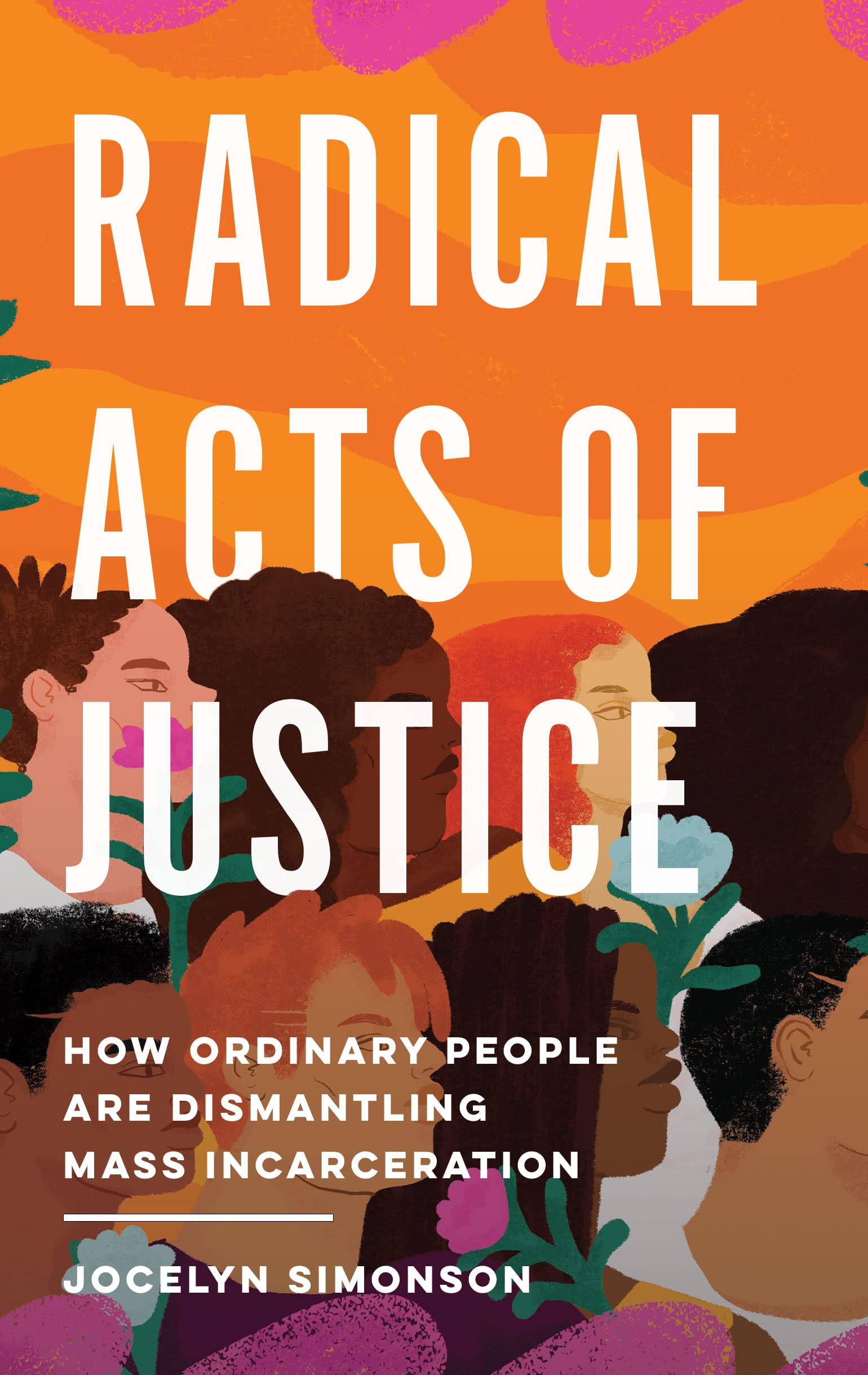In their roundtable responses, Sharlyn Grace and Micah Herskind both illustrate the long-term changes—personal and collective, social and political—that can come from engaging in struggle with others within and outside the criminal legal system. Grace and Herskind each describe themselves as organizers radicalized through long-term collective resistance to the carceral state.
Grace details nearly a decade of her own collaborative work in Chicago, from cofounding the Chicago Community Bond Fund, which has freed thousands of people since 2015, to helping lead the successful statewide Illinois Coalition to End Money Bond, which achieved its stated purpose this year with the passage of the Pretrial Fairness Act. Herskind’s most recent organizing revolves around the two-year-old movement to stop Cop City in Atlanta, a movement fighting to prevent the spending of more than $90 million to destroy hundreds of acres of public forest and build, in its place, a police training facility.
Notably, although neither mentions it, both Grace and Herskind are not only organizers, but also lawyers (or, in Herskind’s case, lawyer-to-be). Yet although law and legal battles run through both these writers’ descriptions of long-term struggle, law is not at the heart of their stories: Instead,they understand change, including legal change, as driven by collective, bottom-up work to materially help people and fight against the criminal system, while trying to live out larger ideas of what the world could be without the system’s existence.
Roundtable

This article concludes a roundtable about the author’s new book, Radical Acts of Justice: How Ordinary People Are Dismantling Mass Incarceration.
In many ways, Grace’s and Herskind’s experiences parallel the kind of struggle that I detail in Radical Acts of Justice. In the book, I use the examples of bail and bond funds, courtwatching, participatory and collective defense, and people’s budgets to illustrate the ways in which collective action within the criminal system can, through material help and collective resistance, undermine the reigning ideas of justice and safety that uphold the status quo. These tactics of collective resistance all use the tools of the system to fight the system itself. The respective long-term campaigns in Illinois and Atlanta that Grace and Herskind depict also employ some of these tactics. In Grace’s telling of change in Chicago, for example, it was the work of the Chicago Community Bond Fund, freeing hundreds of people each year, that led to the formation of the statewide coalition that ultimately ended money bond. And the Stop Cop City movement has, from its inception, received jail and bail support from the Atlanta Solidarity Fund. Indeed, that support led earlier this year to the criminalization of three solidarity fund members, who were arrested and prosecuted for the very acts of raising money and spending it on bail for protesters.
Both the success of the Chicago Community Bond Fund’s coalitional work, and the out-and-out repression of the Atlanta Solidarity Fund’s members, reveal the power of the work of bail and bond funds. These collective acts of freeing people destabilize the system because they do more than free individuals. They also generate new ways to understand community safety beyond pretrial incarceration—ways that threaten the legitimacy of the criminal system itself.
While their stories illustrate the power of bail funds, both Grace’s and Herskind’s essays go further than Radical Acts of Justice does, helpfully expanding the range of tactics that we can and should lift up and analyze in relation to the power of the carceral state.Grace explains how the organizing against money bond in Chicago, for example, was made possible by the analysis and power generated within an ecosystem of abolitionist organizing and mutual aid in Chicago. In particular she points to the spaces created by Mariame Kaba and others in which young people could learn and organize together. And in Atlanta, Herskind describes how the Stop Cop City movement has taken on a variety of formations and tactics, ranging from burning police vehicles and occupying public land to the ongoing legal battle for a referendum so voters can decide the fate of Cop City in November. Like posting bail for a stranger—the central act of many bail funds—few of these actions are inherently radical on their own. But, when combined with collective work and analysis, and ideally with long-term organizing and coalition-building, these acts accumulate into something bigger. And that bigger thing does ideological work in addition to material work. Even burning a police car in anger can become a physical demonstration of a larger idea about where the city should be spending its resources, not to mention which property—and whose lives—matter.
More from our decarceral brainstorm
Every week, Inquest aims to bring you insights from people thinking through and working for a world without mass incarceration.
Sign up for our newsletter for the latest.
Newsletter
In this way, both Grace and Herskind remind us that acting within the criminal legal system cannot be the solution, on its own, to the existence of the carceral state. Taken together, they put forth a possible critique—although they are careful not to call it that—of a limited understanding of “radical acts of justice” that sees agonistic engagement, slowly over time and according to the rules of the system, as the only way to undo the hold of the carceral state. I would not want this limited understanding to be what readers take from Radical Acts of Justice, nor do I think Herskind or Grace take it to be the book’s lesson. But both writers point to the limits of the agonistic tactics that my book (and my essay for this roundtable) highlight. For these forms of collective resistance can be coopted. They can be suppressed. They can themselves suppress certain forms of expression. And they may not get to the scale of the problem: As Grace tells us, even freeing hundreds of people a year through a bail or bond fund cannot match the scale of the criminalization and caging of entire communities, cities, and states. Although I name all of these limits in the book, it is powerful to see these essays highlight them in the context of other important forms of decarceral and abolitionist organizing.
Given the limits of “radical acts of justice” in an agonistic sense, two things can be true at once. First, it is true that there is something distinctly important about collective interventions within the criminal system using the given rules of the system. Second, it is simultaneously true that there is always something limiting about any one of these tactics of resistance, none of which can, on its own, be a solution to the dangerous pathologies of the carceral state.
There is a unique ideological force in using the legal language of the system against itself. Examples of this abound. In the context of bail funds, they perform how real community safety can land on the side of freedom. In the context of courtwatching and people’s budgets, actions demonstrate that a community group constitutes “the people” as much as, or more than, any individual prosecutor or legislator.State actors—judges, prosecutors, legislators, and even sometimes public defenders—bristle and retaliate when people use these agonistic tactics precisely because they undercut the ideological status quo. I emphasize the importance of calling these “radical acts of justice” because we often do not think of them as either radical or as forms of justice. But doing so can help us see their power and importance in the larger scheme of the fight over the scale of the carceral state, and whether it should exist at all.
At the same time, I join Grace and Herskind in promoting an expansive understanding of the forms of collective work that can be productive and liberatory. Whether it is mutual aid outside of the state, protest and civil disobedience, or even forms of vandalism and destruction, a determination about whether a tactic is worthwhile can only be made in the context of a particular time and place, and in relation to the dominant ideologies and practices that people are resisting. The expansiveness of the collective formations and organizing tactics in both Atlanta and Chicago are simply breathtaking, worthy of entire books on their own. So, too, is the coalitional work in Boston that led to the fight against the city’s “jail court” in October 2021, a story I told in this roundtable’s opening essay. In each instance, a diverse set of collective tactics of resistance, some autonomous and some in coordination, have pushed back against the state’s dominant story that criminal law and punishment are just ways to address violence and promote safety more broadly. These groups have lived out other understandings of how to best spend state resources to ensure collective well-being—and of how, in the meantime, we can keep each other safe.
To read Jocelyn Simonson’s original essay, click here. Roundtable responses by Chicago organizer Sharlyn Grace and Atlanta organizer Micah Herskind can be found here and here.
Image: Bogdan Farca/Unsplash

